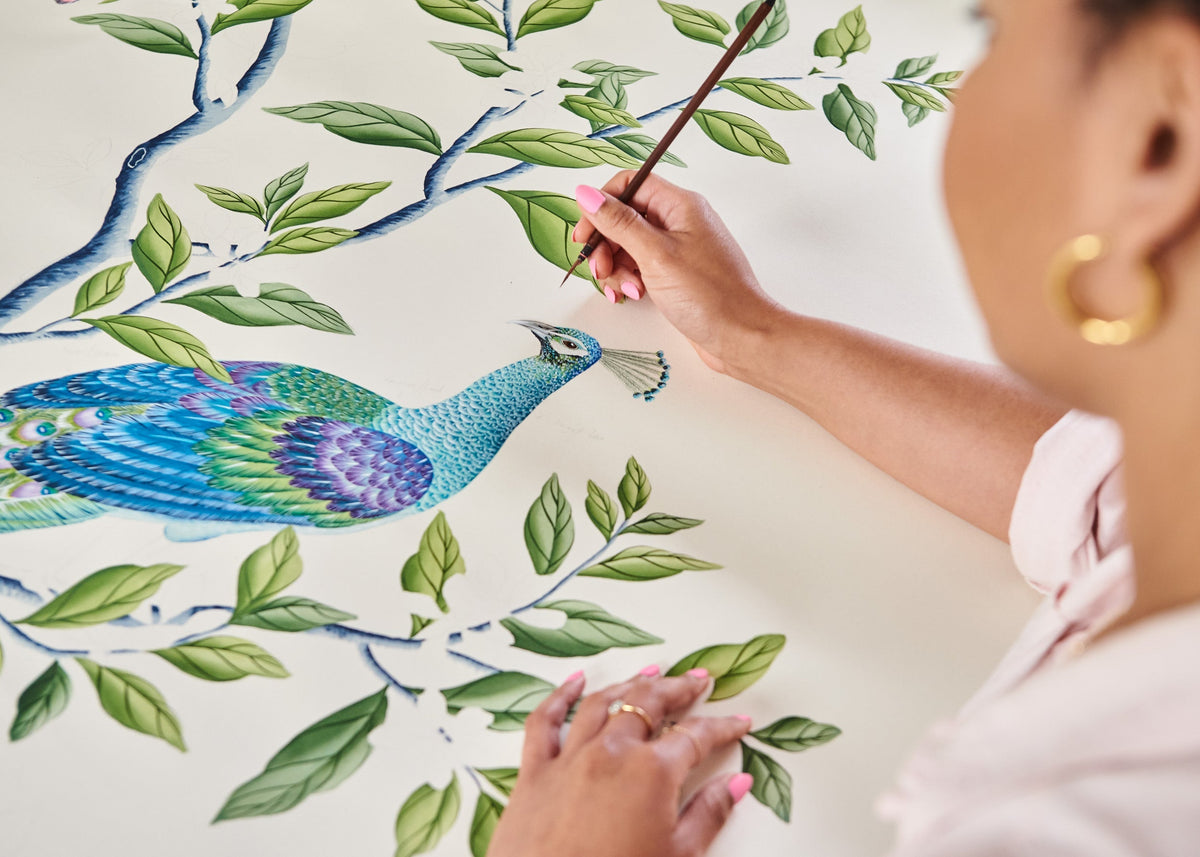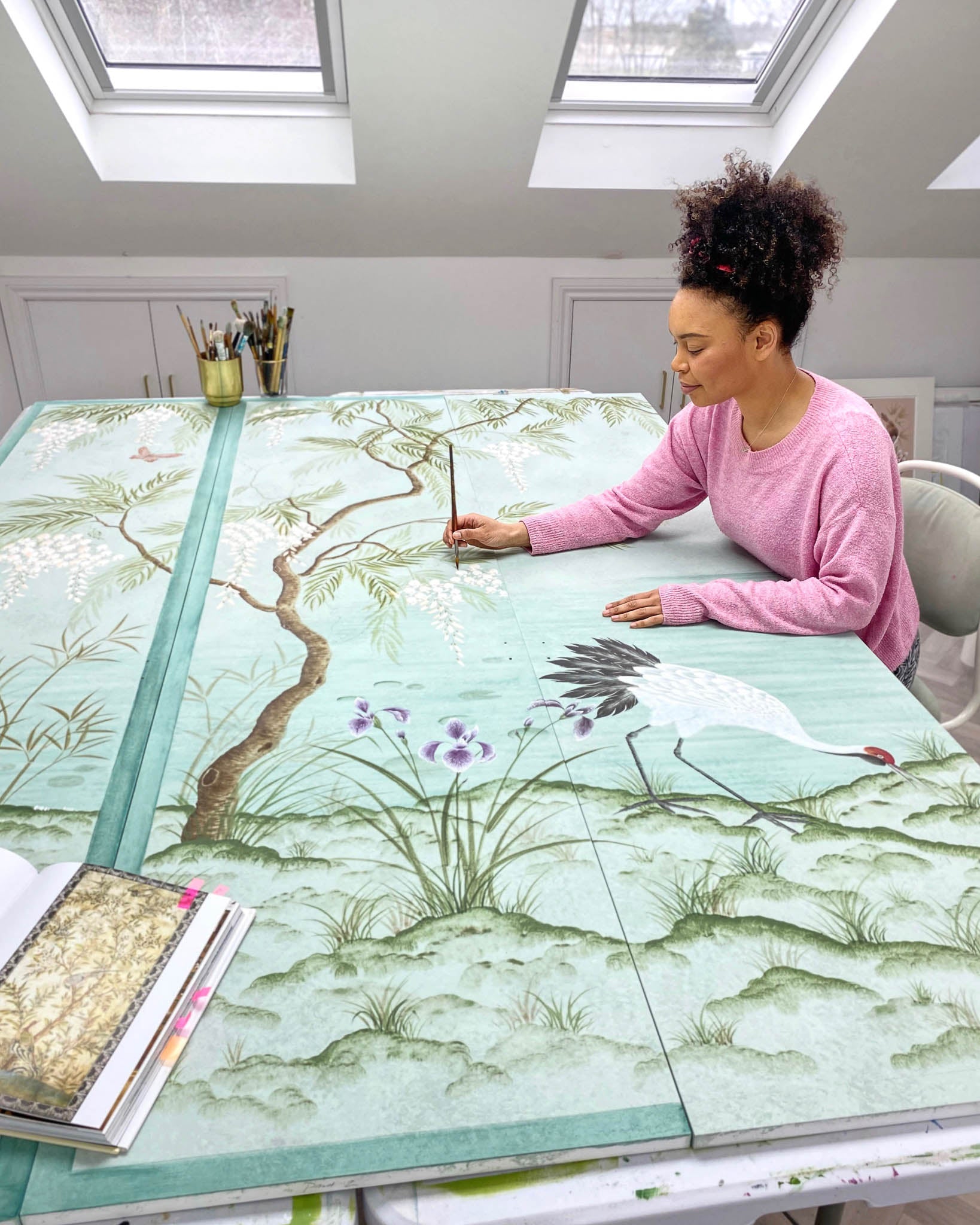I love how you paint its very inspired.thanks for sharing.

Learn How To Paint Chinoiserie Art
|
4 min
|
4 min
Do you want to learn how to paint chinoiserie art, but have found that there is hardly any guidance online to help you?
Well, look no further! I travelled to China to learn this beautiful art form from the masters, and now I want to share some of my best chinoiserie painting tips with you in this helpful guide.
This guide is a great start, and if you want more detail about painting chinoiserie art, I've written an e-book! This will help you understand the basics, tools, and techniques, you can check it out here !
Chinoiserie (or Chinese-style) is a Western painting style inspired by the opulence and grandeur of the ‘mysterious East’ that was made popular in the 18th Century and continues to this day!
Related blog post: The Timeless Allure Of Chinoiserie Wallpaper
This style of painting remains mysterious, but I was lucky enough to travel to China to learn how to paint chinoiserie using these beautiful techniques, so it's my duty to share that with you so we can keep the tradition alive!
When learning how to paint chinoiserie art, there are a few things you’ll need to gather first before you begin. Most importantly, you’ll need the right art tools and materials.
I typically use gouache paints, silk paper, and 3 chinoiserie paintbrushes in all of my artworks to create layers of gradients and details that join together to form luxurious and stylised designs.
Two paintbrushes of the same size are used for laying down the paint and blending, and a slim-tipped paintbrush is used for fine lines and details.
You'll also need a 4H pencil, paint palette, and clean water.
I start every chinoiserie design with a little research, I begin by looking through books or on Pinterest at 18th Century chinoiserie wallpapers. My favourite book is 'Chinese wallpaper in Britain and Ireland' by Emile de Bruijn.
Before you think about painting, it's best to draw your classic chinoiserie scene on a separate piece of paper, once you are happy you can transfer the drawing to your surface. Think carefully about your composition, leave some open space and allow the branches to move freely with lots of twists, turns and overlaps.
The key to creating a traditional scene is balancing a fuller lower half with plenty of open space towards the top. Feel free to play around with the design and include elements like trees, butterflies, birds, and flowers (and don't forget - it doesn't have to look realistic, chinoiserie art has a graphic quality to it!).
What defines chinoiserie art is the beautiful gradients in the paint that give the design a look between stylised and natural, and there are a number of techniques you can use to achieve this.
The way to achieve those classic chinoiserie gradients is by using two paintbrushes to smoothly blend out layers of paint.
Apply your base coat and let it dry fully, then apply a darker shade which you'll blend out using the second paint brush loaded with clean water. You'll find more detailed instructions on this within the ebook.
You can repeat this process as much as you need until you reach the gradient you desire!
Once you've finished building your gradients and they're dry, it's time to add the details!
Using a fine-tipped brush and slightly thicker paint, use the whole body of the brush to add fine lines or just the tip to add smaller dots or details.
Making a mistake when you're painting can feel very frustrating, but don't panic! These things can be fixed.
There are a number of tricks you can use to correct a mistake, but the simplest one would be to paint over it with a flower bud, leaf, or butterfly (I do this all the time!).
Mastering any new painting technique takes time and patience. The creative process can sometimes feel frustrating, but practice makes perfect, and seeing your artistic goals come to life is a feeling like no other!
Painting is a beautiful way to relax the mind and take a break from the stresses of life, and can be an amazing form of self-care as well as artistic expression.
If you want to learn more about painting chinoiserie art, then be sure to take a look at my popular e-book for even more tips and advice!
You can also sign up below to get FREE access to my blossom painting mini-course AND be the first to receive new tutorials, course launches, news, and more!
Comments
I love how you paint its very inspired.thanks for sharing.
Yes please
Wow your painting are so beautiful. I’ve been looking for years. originally I used pen and ink. I’ve tried everything. I’m on watercolor at the moment. I think I’ve been trying to do what you do. I love japanese art. I go through so much watercolor paper that never feels right.
Hi, I’m a cad artist and just getting involved with creating chinoiserie designs for wallpaper and fabric. I
Find it all very interesting and loving the process!
Me gustaría saber más sobre esta técnica de pintura
Gracias
